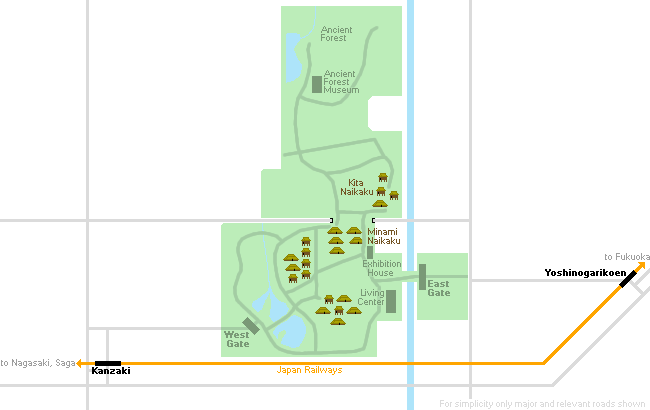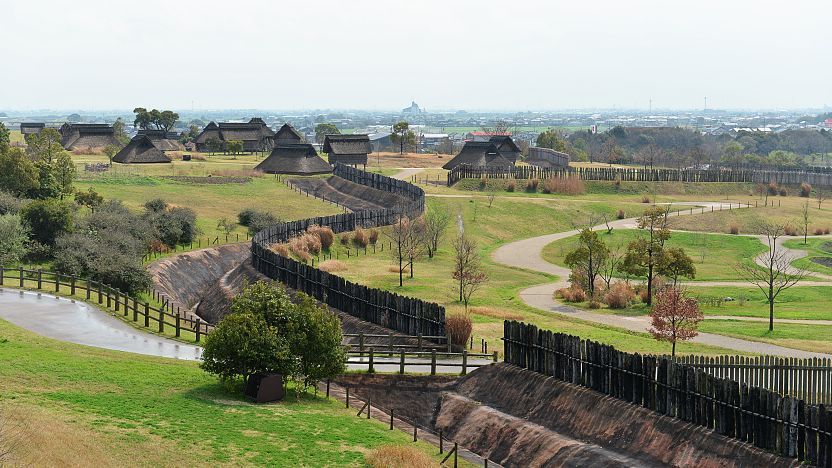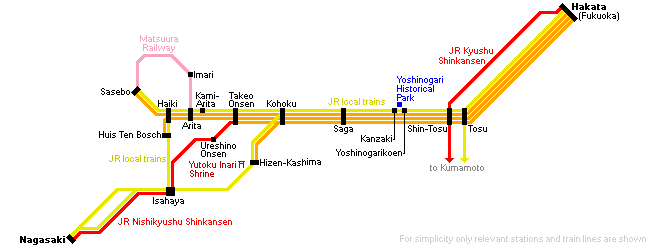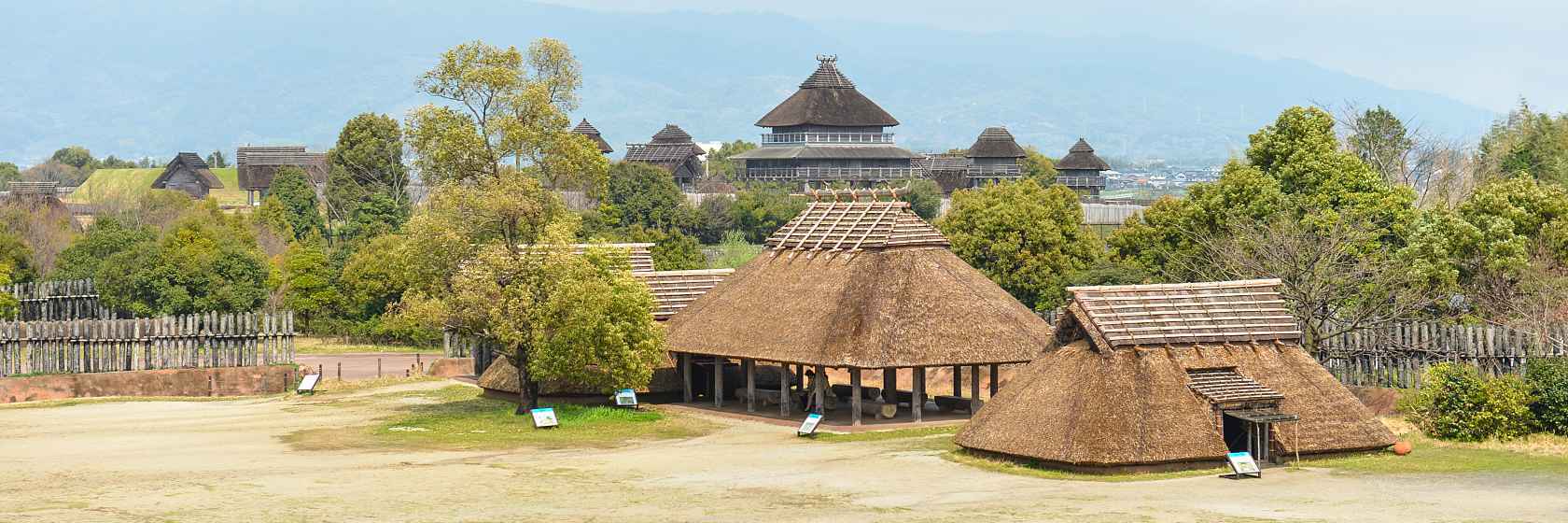The Yoshinogari Historical Park (ŗg¢ņā¢ŚóŚÄjī÷ēĆ, Yoshinogari Rekishi Kōen) is an outstanding archaeological site in Saga Prefecture. The sprawling park covers a large settlement from the Yayoi Period (300 BC to 300 AD) where dozens of pit dwellings, elevated store houses and over 2000 tombs were unearthed. It is the largest and most important Yayoi Period site in Japan, and the best place to learn about this era of Japanese history.

The settlements unearthed at Yoshinogari are believed to have been some of the largest moat encircled villages of their time and are speculated to have been the seat of one of the earliest forms of state government found in Japan. Today the ancient site has been preserved with impressive reconstructed villages for visitors to explore and learn about Yayoi life and culture. The careful reconstructions include dozens of pit dwellings, elevated store houses, watch towers, shrines and other structures, many of which can be entered. Some contain tools and implements, while mannequins reenact jobs and ceremonies in others.
Of the reconstructed villages, the Minami Naikaku settlement at the center of the park is one of the most important. Enclosed by defensive walls and moats, this is where the Yayoi Period kings were thought to have governed from. Nearby is an exhibition house displaying tools and clothes of the Yayoi people as well as artifacts and displays explaining their agricultural techniques. Another section displays burial jars unearthed around the site. The exhibitions include detailed English descriptions.

A short walk north is another important enclosed settlement called Kita Naikaku, which contains a large shrine and dwellings used for ancient ceremonies. Further north is another museum focusing on the ancient forest that covered the area two millennia ago. A living center near the east gate allows visitors to participate in hands-on activities (100-250 yen) such as stone carving and building a fire with a bow-drill.
In addition to its historical sites, the large park includes other recreational areas such as a sprawling open field where people can picnic and play sports, playgrounds, disc golf and miniature golf courses, and agricultural fields where flowers and various display crops are grown. The east gate includes a restaurant and souvenir shop.

Getting there and around

From Fukuoka
From Fukuoka's Hakata Station take the Kyushu Shinkansen to Shin-Tosu where you can transfer to a local train to Yoshinogarikoen Station. The one way trip takes around 35 minutes, costs 1740 yen for a non-reserved seat, and is fully covered by the Japan Rail Pass and Kyushu Rail Pass. There are good connections once or twice an hour, but note that not all shinkansen trains stop at Shin-Tosu Station.
Alternatively, take a local or rapid train from Hakata to Tosu and a local train from there to Yoshinogarikoen. The trip takes 45-60 minutes and costs 990 yen one way. There are multiple connections per hour.
From Yoshinogarikoen Station it is a 15 minute walk or 700 yen taxi ride to the park's east gate.
From Nagasaki
Take the Nishikyushu Shinkansen from Nagasaki to Takeo Onsen, transfer to a limited express train to Saga, and change to a local train to Kanzaki. The one way trip takes just over an hour, costs about 5000 yen and is fully covered by the Japan Rail Pass and Kyushu Rail Pass. From Kanzaki Station it is a 15 minute walk or 700 yen taxi ride to the park's west gate.
Hours and Fees
Hours
Closed
Admission
Questions? Ask in our forum.



